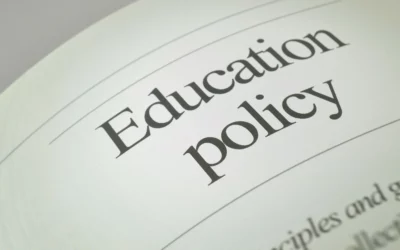
Written by Christine Cooke Fairbanks
January 5, 2023
Born out of school closures and the need to find options, the aptly named “pandemic pods” – groups of families that decided to school their children together – rapidly gained popularity. In reality, pandemic pods might just be the most modern take on a schooling innovation that has been developing in recent decades: the microschool.
What are microschools?
Microschools are a schooling innovation that allows fewer students than in a traditional school to meet in a mixed-age environment, much like a one-room schoolhouse. Microschools don’t have just one definition and can vary in several characteristics, but they usually have 150 or fewer students (most have 15 or fewer, a size some call a nanoschool).
While microschools can exist at the public-school level, recent iterations since the pandemic have a combination of features from home school and private schools in that it can be held at home or a private location, and they are run by parent guides or licensed teachers paid by families. In fact, some microschoolers might identify as home-schoolers while some might identify as private schoolers. Many use a form of blended learning, which incorporates online learning with in-person instruction.
Families looking for personalized learning, smaller class sizes or greater flexibility (over curriculum, approach or school day hours) may find microschools meet their needs. They are also an option for parents who want a personalized alternative but don’t want to pay tuition at a private school.
A quick history
Microschooling as a model harkens back to the one-room schoolhouse, but its modern beginnings could arguably go back as far as the creation of the Alternative Education Resource Organization in 1989, an organization which helps create these types of innovative options.
Microschools grew in the early 2000s, but they became even more well-known during the pandemic, when the organic growth of “pandemic pods” came as a result of parents who wanted an alternative school option for their children for safety or academic reasons.
A look at the nation
While there is not a lot of data on microschools, one estimate suggests there might be anywhere from 1.1 million to 2.2 million children who are microschooling full-time.
Some established microschooling networks, like Acton Academy, have many schools across the nation. In 2020, Acton Academy schools (a well-established microschooling network since 2009) had as many as 180 microschools. At the end of 2021, it had grown to over 250 schools across 31 states as well as dozens of countries.
Another is Prenda, which has become a leading tuition-free, small group microschool provider; it has over 400 microschools (of 5-10 students each) serving roughly 4,000 students as of 2021. For a pre-pandemic comparison, Prenda had only 80 schools in 2019. Rather than using licensed teachers, Prenda trains individuals to be “guides” for the program.
Pandemic pods are a form of microschools. Some pods hired teachers to teach them; others used the district curriculum; still others used private or charter virtual school content.
Microschools are even seen as a career alternative for traditional school teachers, who might prefer the smaller class sizes and the autonomy and creativity that microschools provide.
Microschooling can be funded privately or with public education funds set aside for families. This is the case in states where education savings accounts exist, like in Arizona.
A look at Utah
Utah families have access to some microschools as well. There are currently seven Acton Academies across the state. Meadow Ridge Academy is a Utah microschool that focuses on Christian values. My Tech High, an innovative and flexible Utah-created provider that works with districts, can also help families create pandemic-pod-like options. However, there are no Prenda sites yet in the state, according to Prenda’s website.
As the demand for home school rises, we are likely to see an increase in small, highly flexible microschools. Policymakers and innovators should look for ways to advance and support these opportunities so parents, teachers and students can flourish.
More Insights
Read More
Looking at Supreme Court and religious freedom through the lens of the presidential campaign
Two constitutional issues highlight similarities and differences between the Biden and Trump administrations.
Education policy to consider during the 2024 election season
Here’s a look at what each presidential candidate is likely to focus on in education, given their track records and campaign platforms.
Ignoring the text of the Constitution is a mistake
A written Constitution is entirely superfluous if the document is simply meant to give the people what they want.


